

The subtle strength of Barkow Leibinger's Stadthaus M1 derives from its passive house standards and connection to local environment. The basic polygonal form of the overall structure, which includes a hotel and street-level shops separate from apartments, is jointed by a “pocket park” that serves as a serene connector between the complex’s private-public areas as well as a transition space to nearby streets. Located in the “sustainable model district” of Vauban in the already so-called “green city” of Freiburg, Germany, Stadthaus M1 is right at home aesthetically and ideologically.
The plan of the complex is pretty intuitive: the hotel portion, as the more public and social area, looks out onto a major thoroughfare, while the apartments are more tucked away. From the street level however, the two areas are quite cohesive, bound together by consistent roof-lines and façade elements such as wooden fins and climbing plants (which also serve as shading and alleviate energy costs).

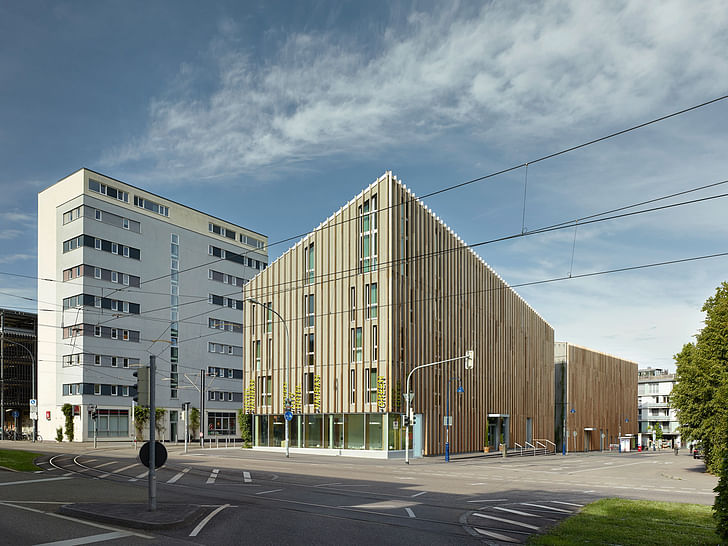
Inside, the ethos of the building is unchanged. Light and wooden schemes reinforce the sustainable model with regionally-sourced materials, and living quarters are oriented to maximize the benefits of passive house energy efficiencies. As mixed-use housing melds with tourism, Stadthaus M1 is a role model for creating architecture that respects both public and private, local and global.
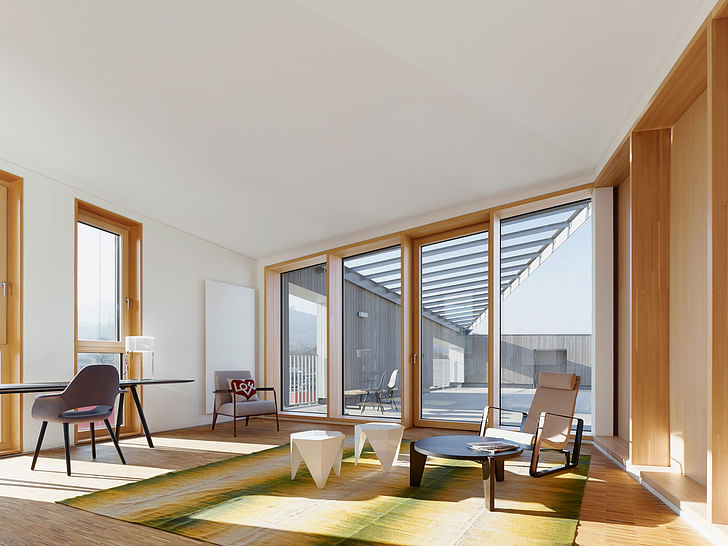
From architects Barkow Leibinger:
Construction / Building Envelope / Energy Concept
The construction for the hotel and apartment buildings are similar: a passive energy standard is reached by combining a structural concrete skeleton frame (floor slabs, cores, and columns for fire protection) with an insulated prefabricated wood frame infill panel system (non-load bearing). In comparison with a conventional masonry construction this lightweight system uses a fifth more of gray energy. The concrete floor slabs in this hybrid system have the added benefit of providing thermal mass while the thinness of the wood frame walls generates more usable floor area.
The low-tech highly insulated facades are the same for the hotel and the apartment building. The window frames are constructed in Oregon pine combined with passive house standard glazing in the apartments and acoustic glazing in the hotel. Since the hotel is situated at a very busy street, additional noise protection was necessary. The wood exterior cladding is a local white pine stained a light gray. The apartments include exterior louvered retractable sunscreens while the hotel utilizes solar glass.

The south building facades, loggias and balconies at the pocket park between the buildings complement active sun screening with a scrim of climbing/ flowering vines of wisteria and roses. The plants grow rapidly up stainless steel vertical cables held away from the facades. In this way the leafy plants shade the buildings in the summer months while letting in warm sunlight in the cold winter months.
Additional vertical wood fins of Western Red Cedar 20 cm deep on 62.5 cm centers define the remaining northern and end facades. These elements unify the two building volumes further. They read as a continuous form segmented only by the pocket park, which separates them into two program types (hotel and apartment).
The roof is standing seam metal with photovoltaic panels laid in-between.

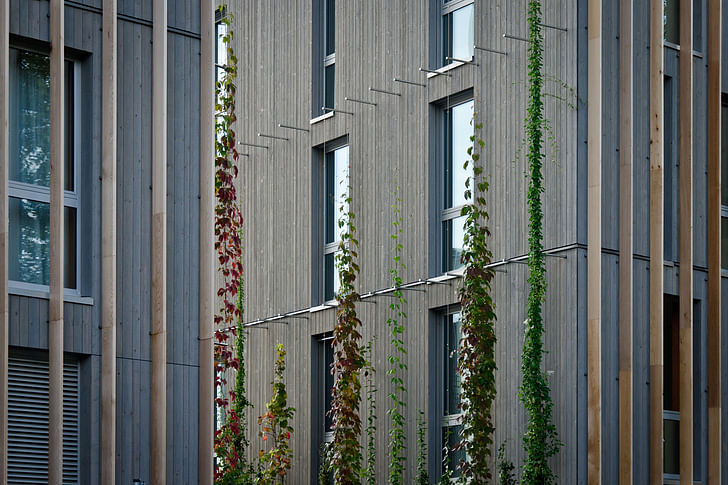
Energy Concept
One of the most important design goals for the Stadthaus was to realize a sophisticated architectural concept with the energy standards typical for Vauban, in terms of content, technology, and design. In cooperation with Transsolar Energietechnik and Horstmann und Berger Bauphysik, we developed an integral concept that was later executed with Paul + Gampe + Partner.
Hotel and Retail:
The use of a highly insulated façade ensures that the requirements of the German energy conservation regulations EnEV 2009 for the structural heat insulation in the hotel and retail areas were undercut by 15%. The total primary energy supply is 60% below what is permitted. Heating and air conditioning work with the aid of wall-integrated water-bearing capillary tube mats. Partially renewable energy sources are used for heating and water heating, local and long-distance heating. Additional electricity is produced with a photovoltaic plant integrated into the roof.
Housing:
In the residential units, the transmission heat-loss coefficient is 30% below the permissible limit, and the primary energy requirement is 70% below the permissible level. Thus the apartments meet the Freiburg Energy-Efficiency-House Standard 40, based on the internationally used passive house standards. A highly efficient ventilation system with a high heat recovery rate, in combination with a high building density, helps avoid uncontrolled ventilation heat loss.
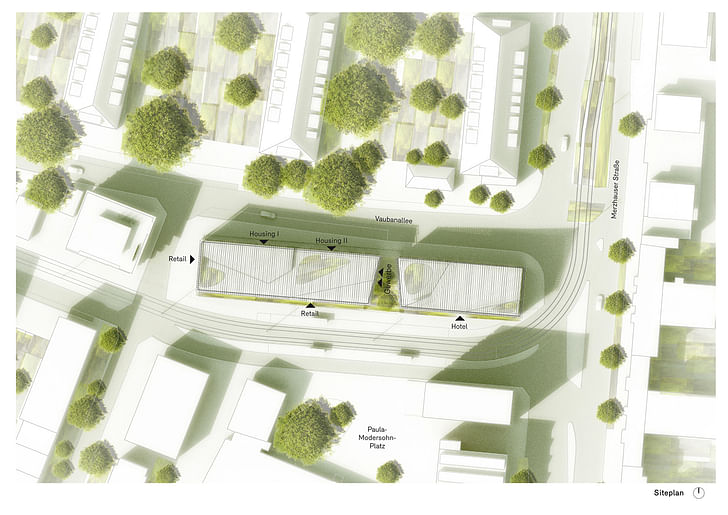

Program / Organization
The Green City Hotel Vauban has a three-star superior garni standard and is run by a not-for-profit organization as a so-called integration business, where part of the staff has a disability. In this way, the client Freiburger Stadtbau GmbH, which is also a shareholder of the company running the building, combines energy standards with socio-political goals.
On an area of almost 2,800 m2, the hotel provides space for 48 rooms and a suite. To the south, facing the square, the lobby with the reception and a day bar are located, as well as a breakfast room, and a conference area. To the north are the side rooms, the kitchen, and the reception office. On the upper floors, the hotel rooms are oriented along a central hallway to the north and south. Their concept provides for a clear formal vocabulary using sustainable and regional materials. The furniture was made of solid ash wood from the Black Forest.
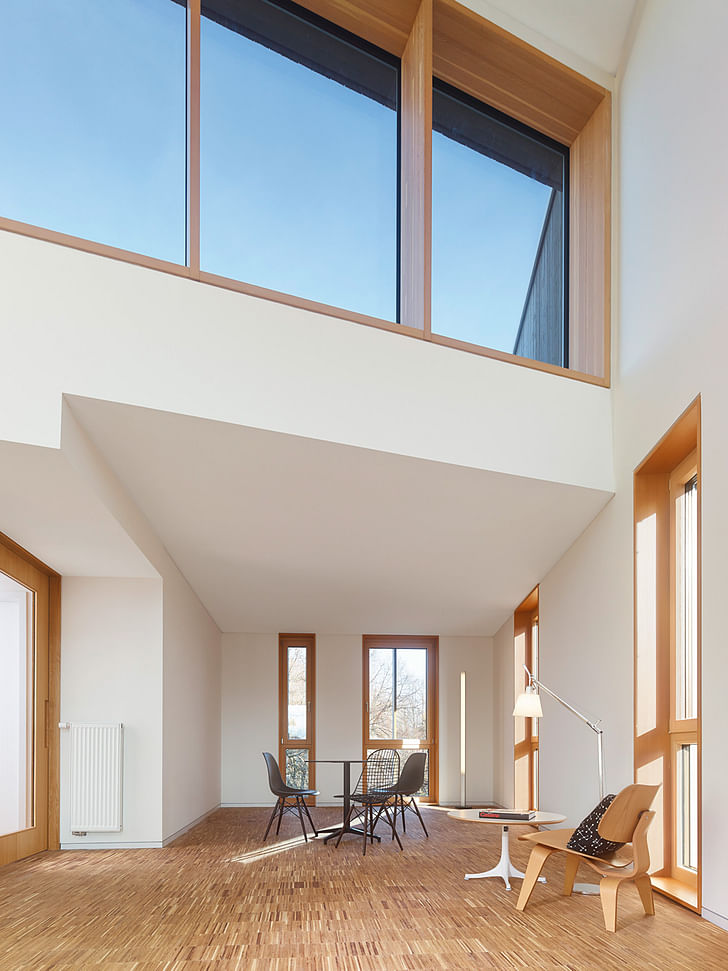
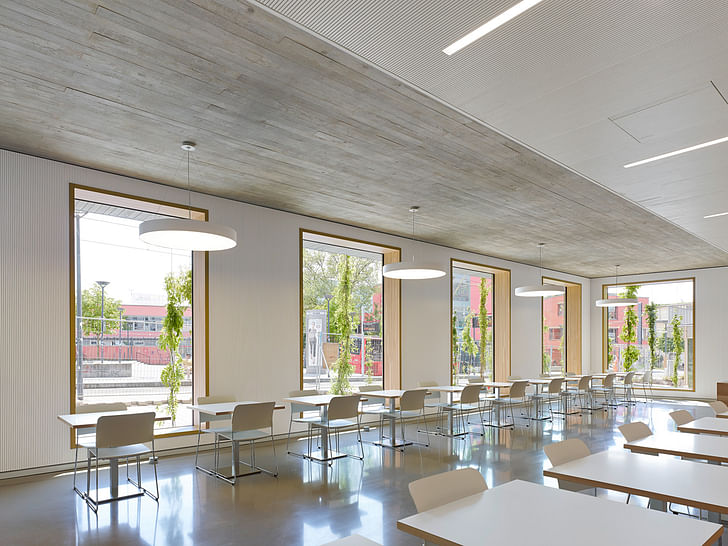
The residential building contains various apartment types varying in size from 110 to 196 m2, including a maisonette and a penthouse apartment with a generous terrace. Because the plot is oriented in a north-south direction, the central living spaces were planned as a sequence of kitchen, dining and living areas. The two service cores are centrally arranged in the 14-meter deep building block so as to utilize the darker zones. The apartments are arranged around the staircase so that the entire façade can be used for lighting.
Rooms with lower temperatures, where inhabitants spend less time, i.e., bedrooms and bathrooms, are located on the northern façade. Living rooms, children’s rooms and studies are on the southern façade, where passive solar gains can be utilized for heating. Floor-to-ceiling glazing ensures good lighting in the apartments. On the ground floor of the residential building, three retail units for small mixed-use businesses contribute to enlivening the square.
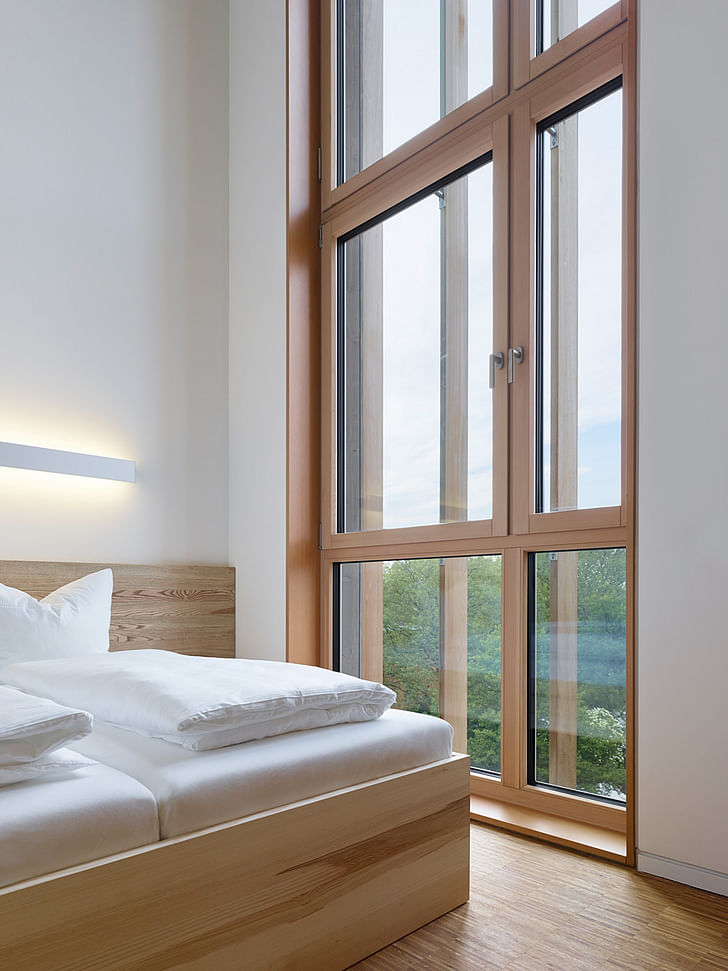
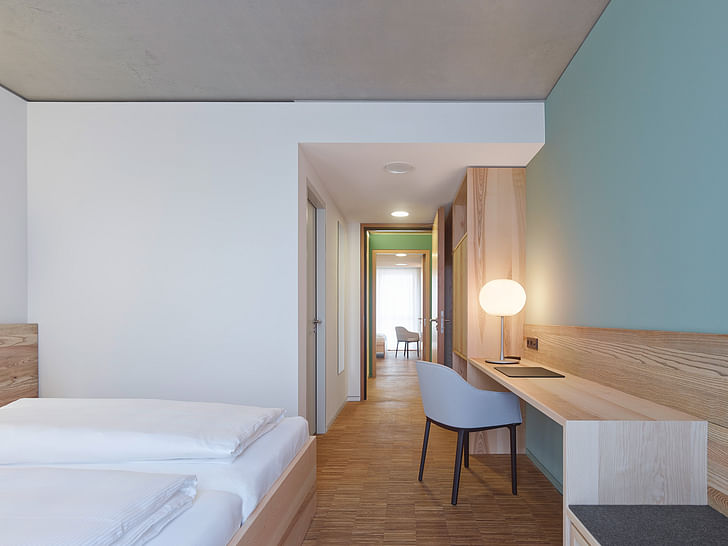
Data Sheet
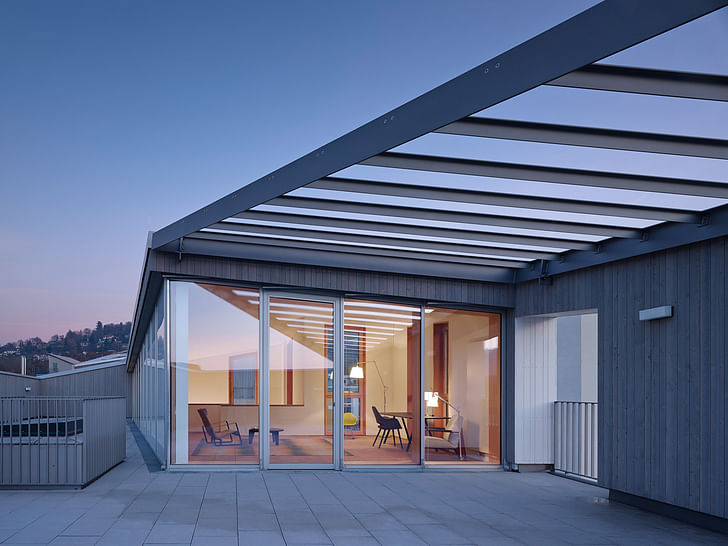

ShowCase is an on-going feature series on Archinect, presenting exciting new work from designers representing all creative fields and all geographies.
We are always accepting nominations for upcoming ShowCase features - if you would like to suggest a project, please send us a message.
Former Managing Editor and Podcast Co-Producer for Archinect. I write, go to the movies, walk around and listen to the radio. My interests revolve around cognitive urban theory, psycholinguistics and food.Currently freelancing. Be in touch through longhyphen@gmail.com
No Comments
Block this user
Are you sure you want to block this user and hide all related comments throughout the site?
Archinect
This is your first comment on Archinect. Your comment will be visible once approved.